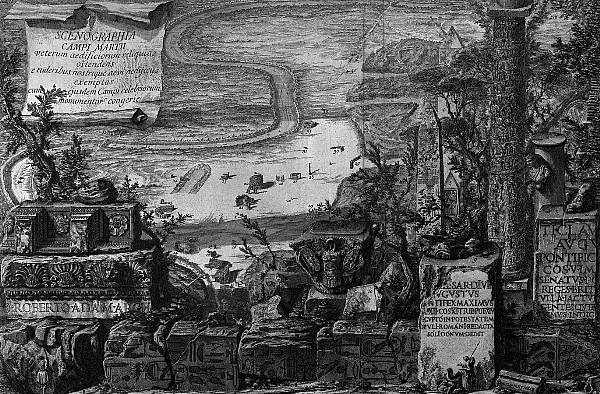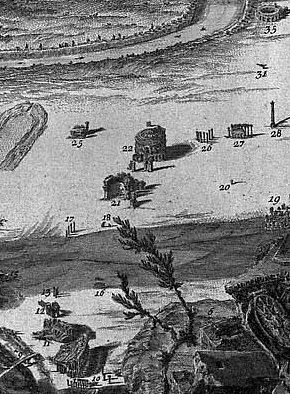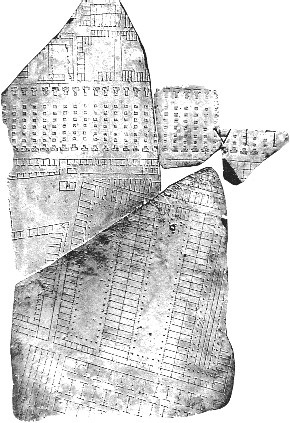2013.12.28 22:07
28 December

It has always been my impression that Piranesi's Scenographia of the Campo Marzio is a perspicacious demonstration of how little actually remains of the ancient Roman architecture that once stood within the Campus Martius.
| |

The Scenographia depiction of the 40 existent in situ architectural remains of the Campo Marzio is in stark contrast to the Catalogo list of 322 buildings mentioned by ancient authors to have once existed within the Campo Marzio
| |
2002.02.20 11:29
Re: paper architectures
B.'s wondering about text (on paper, etc.) architectures makes me want to relate something I found out about the architecture of ancient Rome (particularly the Campo Marzio). An index at the end of Piranesi's Il Campo Marzio publication entitled "Catalogo" lists all the buildings known to have existed in the ancient Campus Martius, and the name of each building is accompanied by the literary (i.e., textual) references within ancient writings where mention of the respective buildings occurs. What is interesting is that eventually I learned (via long assimilation, if not also osmosis) that the only 'real' evidence left of many ancient Roman buildings is their mention in texts. Even within today's archaeology there are no physical remains for lots of 'known' ancient Roman buildings. Of course, there is apparently a lot still buried under later buildings, but one can still (now) think of much of today's 'paper architectures' as the inverse reflection (in a 'quondam' mirror?) of much of ancient Rome's architectures.
A "formless heap of fragments" is what went into making the Ichnographia Campus Martius, not the Ichnographia itself.
| |
1998.01.07
Points of Departure
...Piranesi's cribbing of the Porticus Aemilia for the Septa Julia may actually represent Piranesi's scale for the entire Ichnographia. It could be that Piranesi very purposefully installed the Forma Urbis fragment of the Porticus Aemilia into the Ichnographia for the precise purpose of demonstrating more of the actual scale (and gigantism) of ancient Rome (--it is as if Piranesi is here illustrating his own quote about how one just has to look around at Rome and Hadrian's Villa to see the examples he emulates.) Piranesi was not being deceptive or misleading, nor was he acting out of ignorance of the fragment's true identity. Piranesi used the Porticus Aemilia as evidence and example.

|